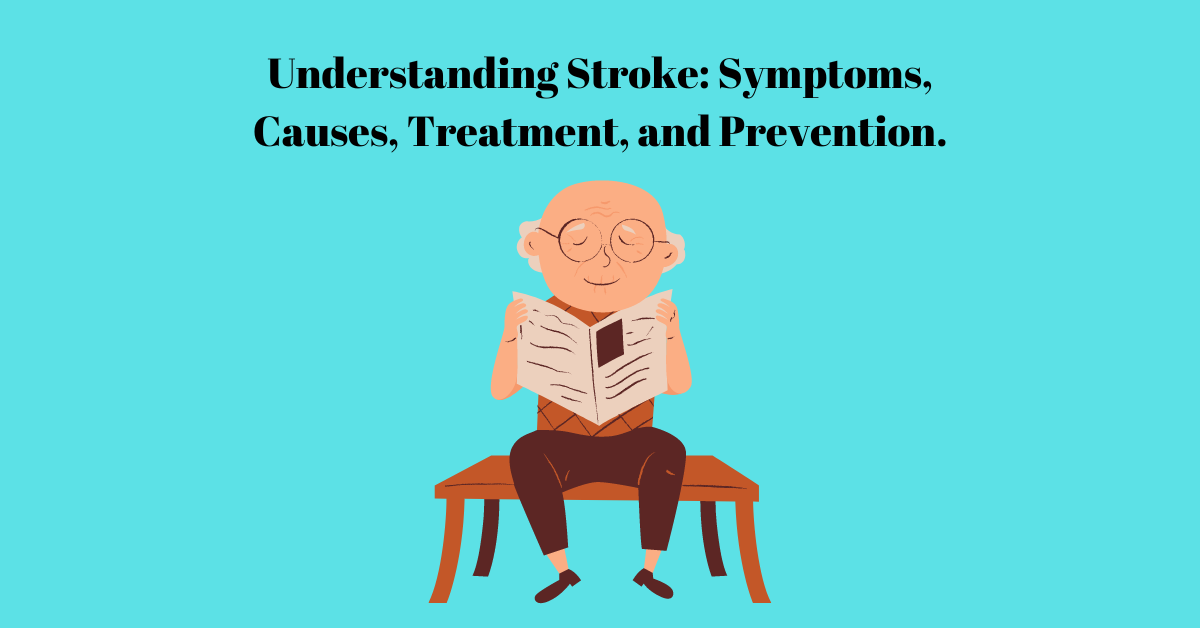A stroke is a medical condition that occurs when the blood supply to the brain is interrupted, causing damage to brain cells. It is an extremely dangerous medical emergency that requires immediate attention. The quicker a stroke is detected and treated, the less damage is done to the brain. Ignoring a stroke will lead to serious, permanent damage, and in some cases death. According to the World Health Organization (WHO), stroke is the second leading cause of death worldwide, responsible for 11% of all deaths globally. In this article, we will discuss everything you need to know about a stroke, including its symptoms, causes, treatment, and prevention.
Symptoms of a Stroke
Recognizing the symptoms of stroke is crucial because timely intervention can prevent long-term damage. The symptoms of stroke usually come on suddenly and can vary depending on the type of stroke and which part of the brain is affected. Some of the most common symptoms of stroke include:
- Numbness or weakness in the face, arm, or leg, especially on one side of the body
- Confusion, trouble speaking, or understanding speech
- Trouble seeing in one or both eyes
- Severe headache with no apparent cause
- Dizziness, loss of balance, or trouble walking
- Trouble with coordination or fine motor skills
If you or someone you know experiences any of these symptoms, call for emergency medical assistance immediately. If your loved one is at risk for a stroke (discussed later) it may be helpful to keep a list of emergency contacts.
Types of Stroke
There are three main types of stroke, which are:
Ischemic Stroke
Ischemic stroke is the most common type of stroke, accounting for around 85% of all cases. It occurs when a blood vessel that supplies blood to the brain becomes blocked, usually by a blood clot. Without blood flow, the affected part of the brain begins to die, leading to permanent damage.
Hemorrhagic Stroke
Hemorrhagic stroke is less common but more severe than ischemic stroke. It occurs when a blood vessel in the brain ruptures, causing bleeding in the brain. The bleeding can cause swelling and pressure, leading to further damage.
Transient Ischemic Attack (TIA)
A transient ischemic attack, also known as a mini-stroke, is a temporary blockage of blood flow to the brain. It produces symptoms similar to a stroke but typically lasts for a few minutes to a few hours and does not cause permanent damage. However, a TIA can be a warning sign of an impending stroke, and medical attention should be sought immediately.
Causes of a Stroke
Several risk factors can increase the likelihood of a stroke occurring. Some of the most common causes of stroke include:
- High blood pressure
- Smoking
- Diabetes
- High cholesterol
- Obesity
- Atrial fibrillation
- Family history of stroke
- Previous stroke or TIA
- Age (over 55)
- Gender (men have a higher risk)
- Race (African Americans and Hispanics have a higher risk)
Treatment of Strokes
Treatment for stroke depends on the type of stroke and the severity of the damage. The goal of treatment is to restore blood flow to the affected part of the brain and prevent further damage. Some common treatments for stroke include:
Ischemic Stroke Treatment
- Clot-busting drugs: Medications such as tissue plasminogen activator (tPA) can dissolve blood clots and restore blood flow to the brain. These drugs must be administered within a few hours of the stroke occurring to be effective.
- Mechanical thrombectomy: This procedure involves using a catheter to remove the blood clot from the blocked artery. It is only effective for certain types of strokes and must be done within a few hours of the stroke occurring.
Hemorrhagic Stroke Treatment
- Surgery: In some cases, surgery may be necessary to remove the blood clot or repair the ruptured blood vessel.
- Medications: Medications may be prescribed to control blood pressure, reduce swelling, and eliminate extra water from the body.
Rehabilitation after a Stroke
Stroke can cause a range of disabilities, depending on the severity and location of the brain damage. Rehabilitation is an essential part of the recovery process and can help patients regain lost abilities and improve their quality of life. Some common rehabilitation techniques for stroke include:
- Physical therapy: This can help improve strength, mobility, and coordination.
- Speech therapy: This can help patients regain their ability to speak, understand speech, and swallow.
- Occupational therapy: This can help patients relearn skills needed for daily living, such as dressing, cooking, and writing.
- Cognitive therapy: This can help patients regain their ability to think, reason, and remember
Prevention of a Stroke
Preventing a stroke is the best way to reduce the risk of long-term damage and disability. Some effective ways to prevent stroke include:
- Maintaining a healthy lifestyle: This includes eating a healthy diet, exercising regularly, maintaining a healthy weight, and avoiding smoking.
- Managing underlying health conditions: This includes managing conditions such as high blood pressure, diabetes, and high cholesterol.
- Taking medication as prescribed: If you have been prescribed medication for an underlying condition, be sure to take it as directed.
- Seeking prompt medical attention: If you experience any symptoms of stroke, seek medical attention immediately. Remember that time is crucial when it comes to treating stroke.
Conclusion
A stroke is a serious medical emergency that requires immediate attention. Recognizing the symptoms of stroke and seeking prompt medical attention can help prevent long-term damage and disability. Understanding the risk factors for stroke and taking steps to prevent it can also help reduce the risk of a stroke occurring. If you have any concerns about stroke or your risk for stroke, be sure to speak with your healthcare provider.

Matthew Laming
Client Relations Specialist at GLHCU. Graduate of Northwood University. General Geek and Nerd Enthusiast.
